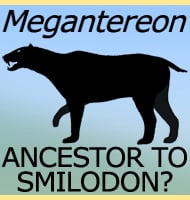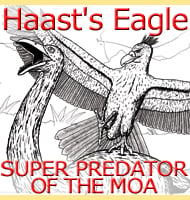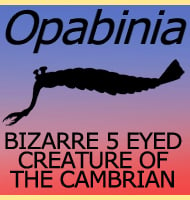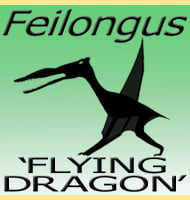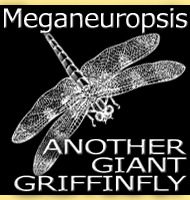When many people think sabre-toothed cat (or more incorrectly sabre-toothed tiger) they usually conjure up images of genera such as Megantereon and Smilodon, large Pliocene/Pleistocene era big cats that have the trademark oversized canines.
However these cats were neither the first or only group of mammals to develop this body form, and going as far away back as the Eocene period, we can begin to find specialised predatory mammals so much like the later cats that they continue to cause confusion and controversy to this day. These are the nimravids.
What is a nimravid?
Nimravids look like cats, and in all likelihood they probably hunted like cats too, but there are a number of differences. The most clearly definable trait that identifies nimravids requires the preservation of the skull. The precise part of the skull that you need to look at is the auditory bulla, a rounded growth towards the rear and on the underside of the skull that forms part of the ear structure. In true cats the auditory bulla is chambered, split into more than one segment. In nimravids however the auditory bulla is a single chamber with no bony division.
Other nimravid characteristics are harder to spot and usually require an expert eye trained in the differences to identify. In more laymen’s terms, the skulls of nimravids are generally more primitive than true cats, although this should come as no surprise since nimravids appear tens of millions of years before the cats. Nimravid paws are also more like those of canids and adapted more for life on the ground rather than climbing up and through trees. Another additional difference is the proportionately shorter legs of nimravids as well as their more plantigrade postures (walking with the foot bones in contact with the ground) whereas true cats are digitigrade (walking on just their toes).
Nimravids tend to possess enlarged canine teeth, although the extent to which they are enlarged can vary considerably between genera. Some like Hoplophoneus had teeth so large that they were in proportion to later machairodonts like Smilodon. However the canine teeth of nimravids were not as refined as the later machairodonts, with the teeth often slightly thicker. Also while the lower jaws of machairodonts are adapted to accommodate the upper canines, nimravids typically have enlarged flanges of bone that extended down from the lower jaw to help protect the upper canines when the jaws were closed.
Briefly returning to the teeth, the differences in canine size and form between nimravid genera is probably down to different kinds of prey specialisation. The large curved sabre-like teeth of some genera were better suited for work on larger prey where the large teeth could easily sink into a soft spot like the throat where there was less chance for the relatively weak teeth to break against the preys bones. The genera with shorter, rounder canines however probably specialised in hunting smaller prey where tooth contact with bones was more likely to happen. Here the smaller size would reduce the chance of contact with bone while the more conical form reinforced the teeth against breakage on occasions when the teeth did strike bone. In addition the genera that had more heavily serrated teeth may have hunted animals with thicker and/or tougher skin that was more easily sliced thanks to the serration.
Nimravid fossils first appear in the later stages of the Eocene with most known from North America, though Asian fossils are also known from approximately this time. During this period the planet had entered a cooling phase which saw the beginning of a gradual reduction in tropical forests to more open scrub. In these ecosystems nimravids were likely ambush hunters of mammals such as primitive horses like Hyracotherium and oreodonts. As the Oligocene progressed the global cooling and the climate change continued, but the nimravids seem to have thrived during this era and remained one of the main types of predatory mammals across Eurasia and North America.
By the Miocene however the Nimravids seem to have been on the decline. Out of nine established nimravid genera known in 2012, only three of these were known to have Miocene aged fossils. Two of these, Dinictis and Nimravus only seem to have made it as far the Aquitanian, the first stage of the Miocene. The only genus at this time known to have made it as far as the late Miocene (specifically the Tortonian period) is Pogonodon. This decline coincides with the on-going climate change towards grassy plains, something that saw the types of available prey changing, possibly to the point where nimravids could only continue to survive by specialising in their hunting behaviour. Nimravids do not seem to have been the only predator group affected though, with others dominant groups such as the creodonts, mesonychids and entelodonts reducing in the number of genera before disappearing completely in the Miocene.
The one main group of predators that bucked this trend and thrived in the Miocene where the amphicyonids, better known as the ‘bear dogs’. It was probably competition from these and other more advanced predators that forced the remaining nimravids into the side-lines where they had to eek a living in the few locations that could support their method of hunting, until these areas also disappeared and the nimravids with them. So far no nimravid remains are known from any later than the Tortonian period around nine million years ago.
The Nimravidae once had many more genera included within it, however one of these genera called Barbourofelis was intensively studied to the point that in it was used to create a sub group called the Barbourofelinae (Schultz et al. - 1970). Then in 2004 a new study by Morlo et al. resulted in the creation of the Barbourofelidae, a family distinct from the Nimravidae that become the new home of Barbourofelis and those genera most like it. Today these are called the barbourofelids.
What is a barbourfelid?
Barbourofelids still possess some of the difference that make the Nimravids a distinct group, such as a similar auditory bullae, but the other differences between them and true cats of the Felidae are even more subtle. So subtle in fact that an increasing number of palaeontologists are questioning if the barbourfelids should be separated from the felids at all. Unfortunately this remains a grey area with some researchers classing them as a distinct group within the Carnivora, while others include them within the Feliformia, the group that includes the Felidae (cats).
When the nimravids started to decline in the early Miocene the barbourofelids began to appear. It is quite possible that their appearance could have been one of the main factors that contributed to the demise of the nimravids since not only were they better adapted to hunt the new types of herbivores, but they would have also been hunting in the same ecological niche as the now less well adapted nimravids. Being more cat-like than the nimravids may have also afforded the barbourofelids with a better chance of holding their ground against the other new predators such as new amphicyonid forms, particularly the larger amphicyonines.
Ultimately however it seems that the barbourofelids did not survive beyond the Miocene since the last barbourofelid remains are not dated to be any more recent than Messinian stage of the Miocene. The cause of the extinction is not certain, but continuing environmental changes along with the appearance of new creatures that were even better adapted to live in them than the barbourofelids probably did away with this group. One group of predators that probably had the most impact upon the disappearance of the barbourofelids is the arrival of the true cats during the late Miocene. One well known genus in particular called Machairodus would continue the sabre-toothed form which in turn would go onto many other types of genera, with the machairodont family ( the true sabre-toothed cats) carrying on for over five million years until the end of the Pleistocene.
Could nimravids and barbourfelids be considered true cats?
By current definitions no, but by future definitions anything is possible. Most of the classification confusion about nimravids and barbourofelids all comes down to the fact that we are currently working to an incomplete fossil record of the Eocene to Miocene eras. While no one knows what the future holds, it is a virtual certainty that it is only a matter of time before the next nimravid or barbourofelid remains are found. Not only will these tell us more about the temporal and geological distribution of these two groups, we might strike lucky and find a new form that helps explain this difference and perhaps eventual progression of one form into another. Alternatively we may find an animal that could be more directly ancestral to this group and perhaps even the Felidae too. Discoveries such as scenario can and continue to happen in other fields of palaeontology, and while we should consider that this may never happen in for these two groups, we should at least continue to look for what is left to be found.


